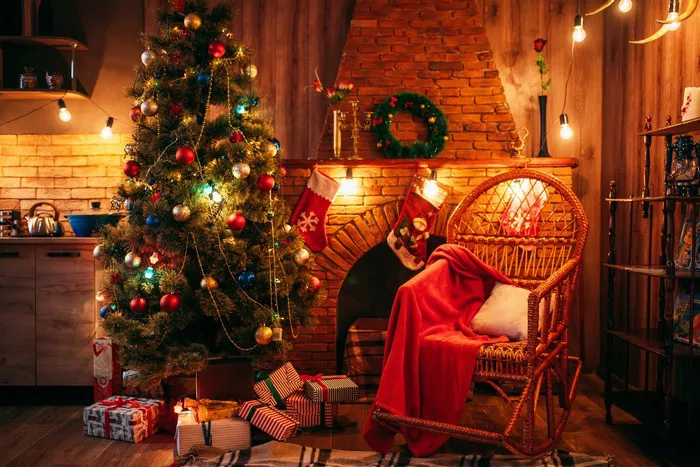Every holiday season, families around the world gather to celebrate Christmas with one iconic symbol—the Christmas tree. This beloved tradition dates back centuries, with roots intertwined in folklore, religious symbolism, and natural beauty. At the heart of this festive custom lies the choice of tree itself. What type of tree graces homes during this joyous time? Let’s delve into the world of traditional Christmas trees to discover the most popular varieties and the reasons behind their enduring appeal.
The Evergreen Connection
The association of evergreen trees with winter celebrations predates modern Christmas traditions. Ancient civilizations revered evergreens for their ability to stay vibrant amidst the harsh winter landscape, symbolizing resilience and everlasting life. Over time, this reverence evolved into the centerpiece of modern Christmas festivities—the decorated Christmas tree.
1. Fir Trees: Timeless Elegance
Among the most cherished choices for Christmas trees are various species of fir trees. These trees are prized for their classic conical shape, dense foliage, and needle retention. The most common types include:
a. Balsam Fir: Native to North America, the balsam fir is renowned for its pleasant fragrance and soft, dark green needles. Its sturdy branches make it ideal for holding ornaments of all sizes.
b. Fraser Fir: Another popular North American species, the Fraser fir boasts a pyramid-like shape and dense, silvery-green needles that retain moisture well. It’s a favorite for its attractive appearance and strong branches.
2. Spruce Trees: Majestic and Stately
Spruce trees are revered for their regal appearance and rich, deep green needles. While they can be prickly to touch, their robust branches can support heavier decorations. Common spruce choices for Christmas trees include:
a. Norway Spruce: This European native was one of the first species used as Christmas trees. It features sharp, dark green needles and a classic Christmas tree shape. However, it tends to shed needles more quickly than other varieties.
b. Blue Spruce: Known for its striking blueish hue, the blue spruce is a favorite for its unique coloration and sturdy branches. It retains its needles well and provides a lovely contrast to traditional decorations.
3. Pine Trees: Rustic Charm
Pine trees are celebrated for their rustic appeal and diverse needle types. While not as popular as firs and spruces, certain pine species are favored for their character:
a. Scotch Pine: One of the most widely grown Christmas tree species globally, the Scotch pine features strong branches and excellent needle retention. Its dense foliage and rich green color make it a timeless choice.
b. White Pine: With its soft, delicate needles and feathery appearance, the white pine exudes elegance. Though less common as a Christmas tree, its gentle nature appeals to those seeking a softer aesthetic.
Selecting the Perfect Tree
Choosing the ideal Christmas tree involves more than aesthetic preferences—it’s a blend of practical considerations and personal tastes. When selecting a tree, consider the following factors:
1. Needle Retention: Look for trees with good needle retention to minimize shedding throughout the holiday season. Fir trees generally excel in this regard.
2. Shape and Fullness: Determine the desired shape and fullness of the tree. Spruces often have a more traditional conical shape, while pines can vary widely in appearance.
3. Fragrance: Consider whether you prefer a tree with a strong, traditional evergreen scent (like a balsam fir) or a milder fragrance (such as a Fraser fir).
4. Durability: Assess the strength of the branches to ensure they can support your decorations without drooping or breaking.
Caring for Your Christmas Tree
Once you’ve selected the perfect tree, proper care is essential to keep it looking vibrant and healthy throughout the holiday season:
1. Watering: Maintain a consistent level of water in the tree stand to prevent the tree from drying out. A well-hydrated tree will stay fresher longer.
2. Placement: Keep your tree away from direct heat sources like radiators or fireplaces to prevent premature drying.
3. Trimming: Trim the trunk of your tree before placing it in the stand to ensure proper water absorption. Regularly prune lower branches to maintain the desired shape.
4. Environmental Considerations
As the demand for Christmas trees increases each year, it’s essential to consider the environmental impact of this cherished tradition. Opting for sustainably grown trees, supporting local tree farms, and recycling trees after the holidays are all ways to minimize the ecological footprint of your Christmas celebration.
Conclusion
The traditional Christmas tree embodies the spirit of the holiday season—a symbol of renewal, hope, and togetherness. Whether you prefer the classic elegance of a fir tree or the rustic charm of a pine, the choice of Christmas tree reflects personal traditions and family values. As we gather around these beautifully adorned trees each year, we are reminded of the timeless magic they bring to our homes and hearts. So, this Christmas, as you select your perfect tree, remember the rich history and symbolism behind this cherished tradition—a tradition rooted in the enduring beauty of nature and the joy of sharing special moments with loved ones.
Related Topics:


























